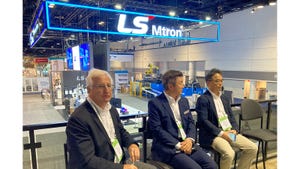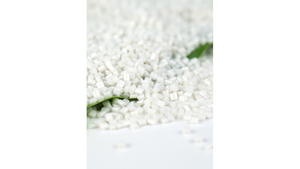CIM promotes more than productivity
July 1, 1997
| Century first ordered three Smart Box 1000 systems for evaluation. Immediately, Tom Karpovage spotted cycle time variations on one insert molding job. After using the data from the Smart Box and tweaking other inefficiencies, variation in total cycle time was reduced 26 percent in one day alone. |
There's a coffee dispenser in the cafeteria at Century Mold Co. Inc. in Rochester, NY. Like others elsewhere, it serves coffee with lighteners and sweeteners. But it also serves cappuccino, espresso, and latte. Such a dispenser is a dead giveaway to management's commitment to quality of life at the plant. It also shows Century Mold's willingness to invest in trying something new to improve quality. Something new like CIM.
An engineering-quality-purchasing team from Century Mold visited a neighbor in its industrial park - Kodak. The team was interested in Kodak's well-publicized successes with its $1 million CIM system from Hunkar Laboratories. The visit seemed to be a much more cost-effective approach than spending a lot of money in an exhaustive vendor selection search. The company was looking for an upgradable system that could provide process monitoring, real-time process control, and SPC data gathering capabilities tailored to its needs. At the ISO/QS 9000-certified, $35 million, mostly automotive molder and moldmaker, Jim Gaffney, Century Mold's director of engineering and manufacturing, felt it was time to take a closer look at CIM. He and his team liked what they saw at Kodak.
But it's what a plant does with its data that makes it successful. The hope was that the new CIM system was going to help the company reduce scrap and cycle times, while improving outgoing part quality and press utilization at its growing design and manufacturing operations in Rochester and in Shelbyville, TN. But someone would have to be found who could implement CIM, someone who knew how to use all that data the system provides. Fortunately, Century Mold found the right person for the job in Thomas Karpovage.
Karpovage was 19 when he started with General Motors. He worked for GM for nine years in supervisory and quality engineering positions. He says he was attracted to Century Mold because of its growth and growth potential, and because of its commitment to proactive quality management. He started at Century Mold last summer, with no prior experience in injection molding of plastics. The company put CIM implementation into the hands of a young quality guy inexperienced in molding. Sound crazy? Read on.
Karpovage developed a business plan, then spent about two solid months familiarizing himself with manuals, reading books on the molding process, and learning the ins and outs of setup by working with folks on the floor. The initial purchase order was for three top-of-the-line Hunkar Smart Box 1000 systems for evaluation (about $15,000 each, including sensors, wiring, and installation). Hunkar's customer service engineers came in to conduct two days of training. The project started its trial run last December.
Karpovage went to work. "There's a lot of information in there. It was overwhelming at first," he recalls. "Once I started using it, it took me about two weeks to get comfortable with it, and I made a lot of mistakes. I must have worn out Hunkar's 24-hour hotline all by myself." He drew on his personal experience and on what he'd learned while at GM, using DOE-like disciplines to benchmark upper and lower control limits for a few problem processes. Immediately, he spotted cycle time variations on one insert molding job involving a four-cavity tool. It's an engine chain guide in glass-filled nylon. Curiously it ran on a relatively new Toshiba machine, a model ISG 180, with Toshiba's V-10 controller. The cycle time should have been 45 seconds, but it ranged, many times at 67 seconds, and sometimes up to 80.
He found that something as simple as standardizing the work method - naturalizing the unnatural bodily motions involved in manually loading inserts and unloading insert molded parts - removed inefficiencies while improving occupational safety. "I baby-sat that job.
I policed it. I personally trained new people on how to use the new standardized work method. I taught them how to pull up the cycle time graph on the Smart Box, so they could see for themselves what they were doing. Guess what? They got excited about improving their performance and began to exceed our expectations."
In one day alone, variation in total cycle time was reduced 26 percent. Over time, variation has been reduced 38 percent. It now takes only 15 hours to complete the run, rather than 24 hours. Cycles now run as low as 41 seconds. So morale has improved, as well as production efficiencies, press utilization, and safety.
Plans already call for equipping all 32 of Century's molding machines in Rochester, and eight machines in Tennessee (60 to 850 tons, mostly Toshibas) with Hunkar terminals by around this time next year. All will be networked into what Karpovage calls a "CIM Room" nerve center in Rochester, operated by a full-time CIM supervisor. He also hopes to eventually loop the network into automated good/bad parts separators at both plants. In this way, after-the-fact quality inspection will be eliminated. "If you do it right at the press, everything else is a given - success comes naturally," Karpovage says.
He concludes with a key word of advice for others taking a closer look at CIM: After you've identified the system you want, dedicate someone to implement its operation into your plant. "Any other priorities will be a distraction," he cautions. CIM at Century Mold is still too new for any big- picture analytical trending of process and production improvements. But the company's management has obviously liked what it's seen so far. For example, Karpovage started as a process systems manager. In only a couple of months, owing partly to his success with CIM, he was promoted to his new position, corporate quality manager.
You May Also Like



